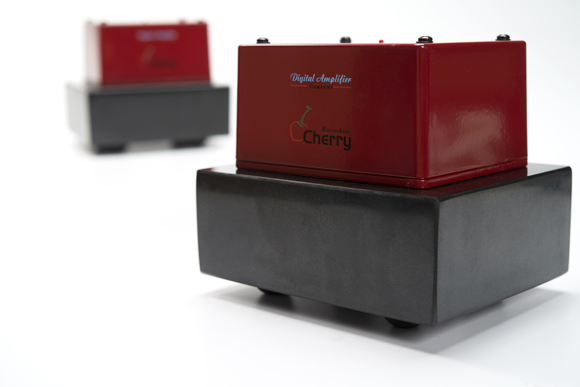 The Digital Amplifier Company—founded in 1996 and located in Allentown, Penn.—solely produces hyper-engineered, audiophile-grade Class-D amplifiers. Its products output plenty of power from manageably sized and attractive packages. The company’s Cherry line comprises stereo and monoblock variants, which are available in standard or higher-output Ultra configurations.
The Digital Amplifier Company—founded in 1996 and located in Allentown, Penn.—solely produces hyper-engineered, audiophile-grade Class-D amplifiers. Its products output plenty of power from manageably sized and attractive packages. The company’s Cherry line comprises stereo and monoblock variants, which are available in standard or higher-output Ultra configurations.
The company says it does not use prefabricated modules and that it designs all vital components in-house, with everything built in the Unites States. Every amplifier comes built to user specifications, allowing customers to choose standard or Ultra configurations and the amp’s color. The company sells direct to end users.
The $4,000-per-pair Cherry Maraschino monoblock model is the newest brainchild of company designer Tommy O’Brien. The Maraschinos are mighty mites, with published output power of 250 watts into 4 ohms. The parts employed are very high quality and include Dayton binding posts, Neutrik XLR inputs, and high-tolerance metal oxide resistors.
The amps feature true balanced input and external power supplies with IEC receptacles. These power supplies are upgradeable, with an available power increase of up to 800 watts. The chassis sits on a granite block, with Sorbothane feet for resonance control. The Maraschinos are produced with a brilliant, high-quality red finish (which is fitting considering the amp’s name).
Setting up the Maraschinos is pretty straightforward, with some twists. The accompanying documentation asks that the user plug in the power supplies last, after all other connections are made, and with low-level music playing through the system. There is no power switch, as the amps automatically detect a signal and come out of standby mode; when no signal is present for a period of time, they return to standby. The amplifier sensitivity is on the high side, at 2.2 volts, but that should be no issue with most preamps and sources.
The Maraschinos accept only XLR inputs, but very nice RCA-to-XLR adaptors are supplied. The adaptors are put to good use, as a passive preamp is what we put ahead of the amps, driving a pair of Harbeth Compact 7 ES3s. Sources include a variety of DACs and disc players. Cabling comes courtesy of Transparent, Shunyata, and Stager Sound.
The amplifiers very much make their identity known from the get-go, with their wonderfully open, clear, transparent, and precise sound. There are no mechanical artifacts or spotlighting of any kind. There is a top-to-bottom, even keeled balance that becomes very quickly addicting such that even familiar recordings come alive with a fresh perspective. This may be due to the Maraschinos’ incredibly quiet background. Music seems to appear out of the ether. Recordings that seemed previously homogenized now appear spacious and wide.

The amps render the Punch Brothers’ Antifogmatic with startling dynamics, precise imaging, and stop-on-a-dime timing. Chris Thile’s well-recorded vocals and virtuoso mandolin playing take on very human qualities, and the groups clever arrangement of Radiohead’s “Kid A” through the Marachinos is worth the price of admission alone.
Peter Gabriel’s New Blood, featuring new interpretations of some of his classic songs, is a hair-raising showpiece through the Maraschinos. The recording is amazingly dynamic; the use of a live orchestra in lieu of rock instrumentation allows the amps to showcase their sound-staging chops. One listen to the new version of “San Jacinto” brings you as close to the recording as you could hope for.
The recent 96 kHz remaster of Nick Drake’s three sublime albums are ravishing through the Maraschinos. Having heard these albums in every format and through countless amplifiers, I find it rather impressive that they still sound fresh, with the amps unexpectedly lifting even more detail from the recordings. If you have a collection of high-resolution music, the Maraschinos will serve you well, as they reproduce what the mastering engineers intended.
After cycling through more genres of music, I discover that the Maraschinos greatest strength is coherence. Bass notes are deep and punchy yet speedy and nimble, with high frequencies sounding extended and smooth. Certainly, system matching is going to be important here. If your speakers edge toward the speedy side of things, that may be too much of a good thing with the Maraschinos. These amps will expose lean-sounding speakers and sources. If listening preferences trend toward mellow and rosy, there will be other amps to look at. However, if clarity, brilliance, and agility are your thing, then the Maraschinos will serve you well. A balanced tube preamplifier ahead of the Maraschinos may indeed provide a perfect balance of both worlds. Neutral, open-sounding cables will also pay dividends.
Perhaps the only quirk to nitpick is that one of the amps is slightly less sensitive than the other, so it takes a few extra seconds to come out of standby. This is not a deal breaker; just a minor annoyance. The fact that the amps save watts while still being ready for optimum performance when awakened is worth the trade-off. They also run cool as a cucumber—a very nice contrast to some of the space heaters usually in for review.

The Digital Amplifier Company has wonderful success on its hands with the Cherry Maraschino monoblocks. By the way, the company’s name does not reflect its design mission: It does not make digital amplifiers. These are analog amps all the way. They are amazingly refined with low distortion. Those accustomed to bogus mid-bass warmth may think the Maraschinos are a bit vivid, but in reality they provide a clean window and they have speed to spare.
If your system needs a kick in the pants, the Maraschinos will deliver. They make our reference system come alive. It is like cleaning a dirty windshield to get a better view of the road. At $4,000 per pair, the Maraschinos are not entry-level amps. They deliver all the real-world power you need, and they’re upgradeable, efficient, great looking, and terrific sounding. These amps give listeners a good look at what the very best amps do well, for a fraction of the cost. Pair them with high-quality sources and speakers and they will deliver the sonic goods.
Cherry Maraschino Monoblocks
MSRP: $4,000 per pair
Digital Amplifier Company
www.digitalamp.com
PERIHPERALS
| Speakers |
Harbeth Compact 7 ES3 |
| Preamp |
Channel Islands Audio PLC-1 MKII |
| CD transport |
Musical Fidelity M1 CDT |
| DAC |
Denon DA-USB300 CLONES Audio Sheva |
| Music server |
Squeezebox Touch |
| Cables |
Transparent Shunyata Stager DH Labs |
|




 The Digital Amplifier Company—founded in 1996 and located in Allentown, Penn.—solely produces hyper-engineered, audiophile-grade Class-D amplifiers. Its products output plenty of power from manageably sized and attractive packages. The company’s Cherry line comprises stereo and monoblock variants, which are available in standard or higher-output Ultra configurations.
The Digital Amplifier Company—founded in 1996 and located in Allentown, Penn.—solely produces hyper-engineered, audiophile-grade Class-D amplifiers. Its products output plenty of power from manageably sized and attractive packages. The company’s Cherry line comprises stereo and monoblock variants, which are available in standard or higher-output Ultra configurations.

 Wireworld has just finished work on a complete site overhaul, showcasing their products in a much more informative, graphic rich environment than ever before.
Wireworld has just finished work on a complete site overhaul, showcasing their products in a much more informative, graphic rich environment than ever before. While perusing the cassettes on sale for 99 cents each I almost missed this one, but my daughter let out a squeal when she saw the KISS lunchbox, not realizing this is a most excellent one from the period celebrating the four “individual” KISS records.
While perusing the cassettes on sale for 99 cents each I almost missed this one, but my daughter let out a squeal when she saw the KISS lunchbox, not realizing this is a most excellent one from the period celebrating the four “individual” KISS records.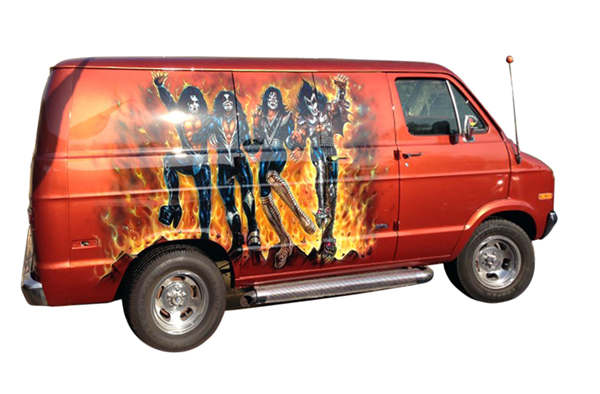 Here’s one fan’s ultimate expression for the hottest band in the land, and it succeeds brilliantly. Contact artist Jay Werner at his studio to explore the possibilities. Maybe a
Here’s one fan’s ultimate expression for the hottest band in the land, and it succeeds brilliantly. Contact artist Jay Werner at his studio to explore the possibilities. Maybe a  Move over Bart Simpson. The hottest plushies in the land are here, and they rule. At about eight inches tall, the likeness of the band’s four individual members are captured in grand style, from the platform boots to guitarist Ace Frehley’s gold Les Paul. And let’s not forget Gene Simmons’ trademark tongue. If you love Kiss, or great memorabilia, you need these. –Jeff Dorgay
Move over Bart Simpson. The hottest plushies in the land are here, and they rule. At about eight inches tall, the likeness of the band’s four individual members are captured in grand style, from the platform boots to guitarist Ace Frehley’s gold Les Paul. And let’s not forget Gene Simmons’ trademark tongue. If you love Kiss, or great memorabilia, you need these. –Jeff Dorgay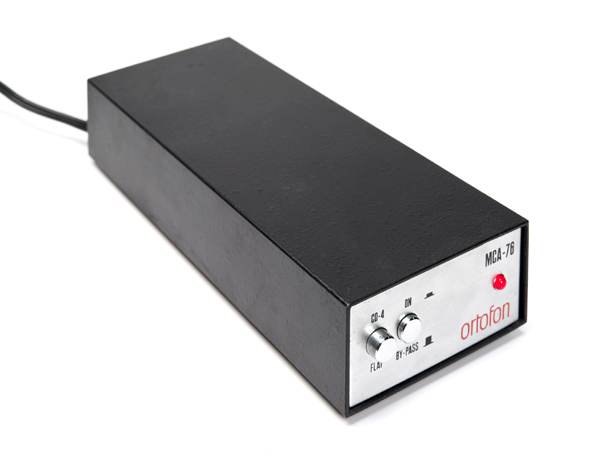 Back when I was selling Technics SL1200s and Shure V-15 cartridges by the truck load, on the brink of becoming an major obsessive audiophile, our shop received the latest and greatest from Ortofon – their MC20 moving coil cartridge and the accompanying MCA-76 head amplifier. If memory serves me correctly, the cartridge was about 300 bucks and the MCA-76 about twice that. Big bucks to step up from that Shure indeed. I was driving a bright green Saab 99 that I barely had that much invested in, but I
Back when I was selling Technics SL1200s and Shure V-15 cartridges by the truck load, on the brink of becoming an major obsessive audiophile, our shop received the latest and greatest from Ortofon – their MC20 moving coil cartridge and the accompanying MCA-76 head amplifier. If memory serves me correctly, the cartridge was about 300 bucks and the MCA-76 about twice that. Big bucks to step up from that Shure indeed. I was driving a bright green Saab 99 that I barely had that much invested in, but I 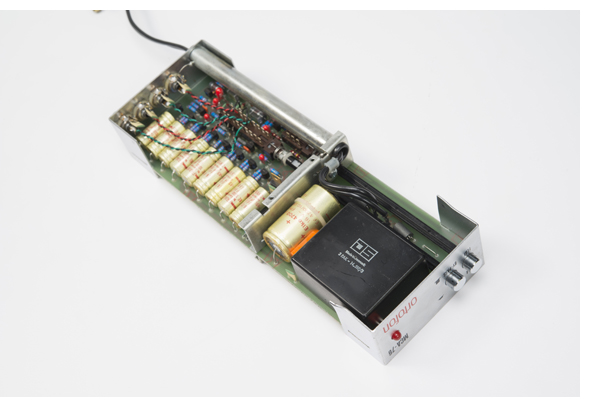

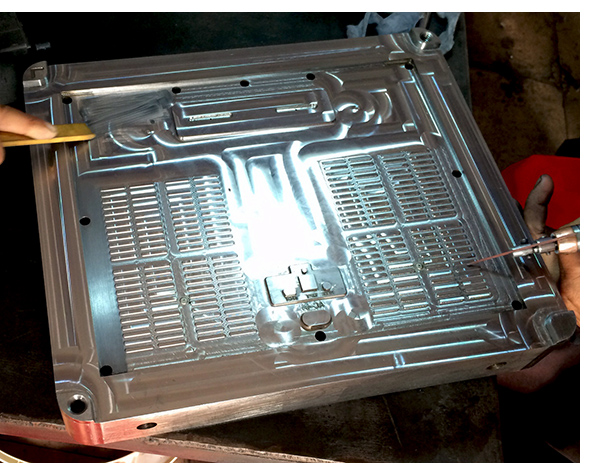 Peachtree Audio, manufacturer of high-performance audio products since 2007, is proud to announce that their INDIEGOGO.com campaign for the launch of deepblue2, the company’s “Ultimate Bluetooth Speaker”, has exceeded $200,000. The campaign reached its initial goal of $63,000 in just over an hour.
Peachtree Audio, manufacturer of high-performance audio products since 2007, is proud to announce that their INDIEGOGO.com campaign for the launch of deepblue2, the company’s “Ultimate Bluetooth Speaker”, has exceeded $200,000. The campaign reached its initial goal of $63,000 in just over an hour.





